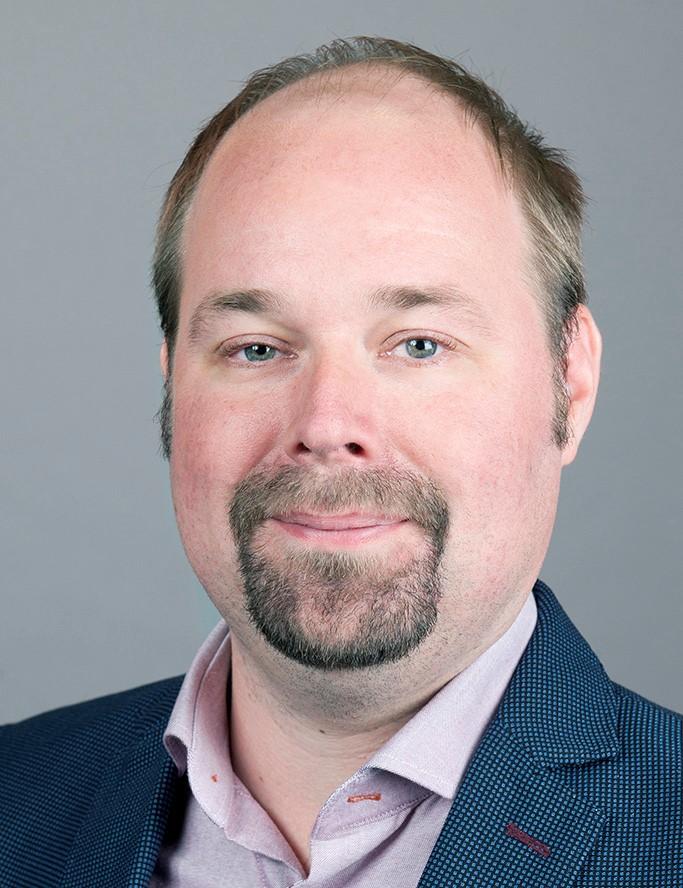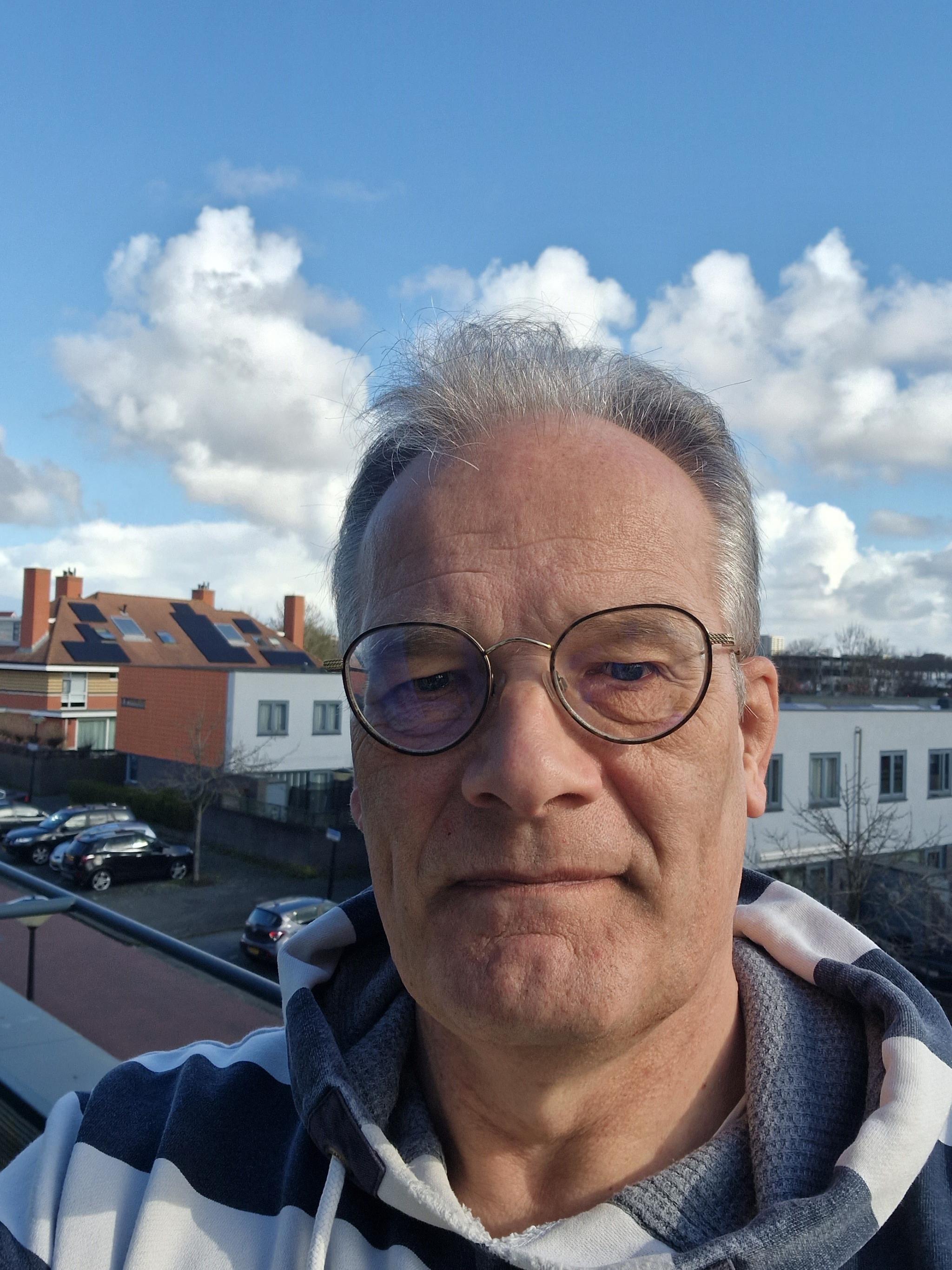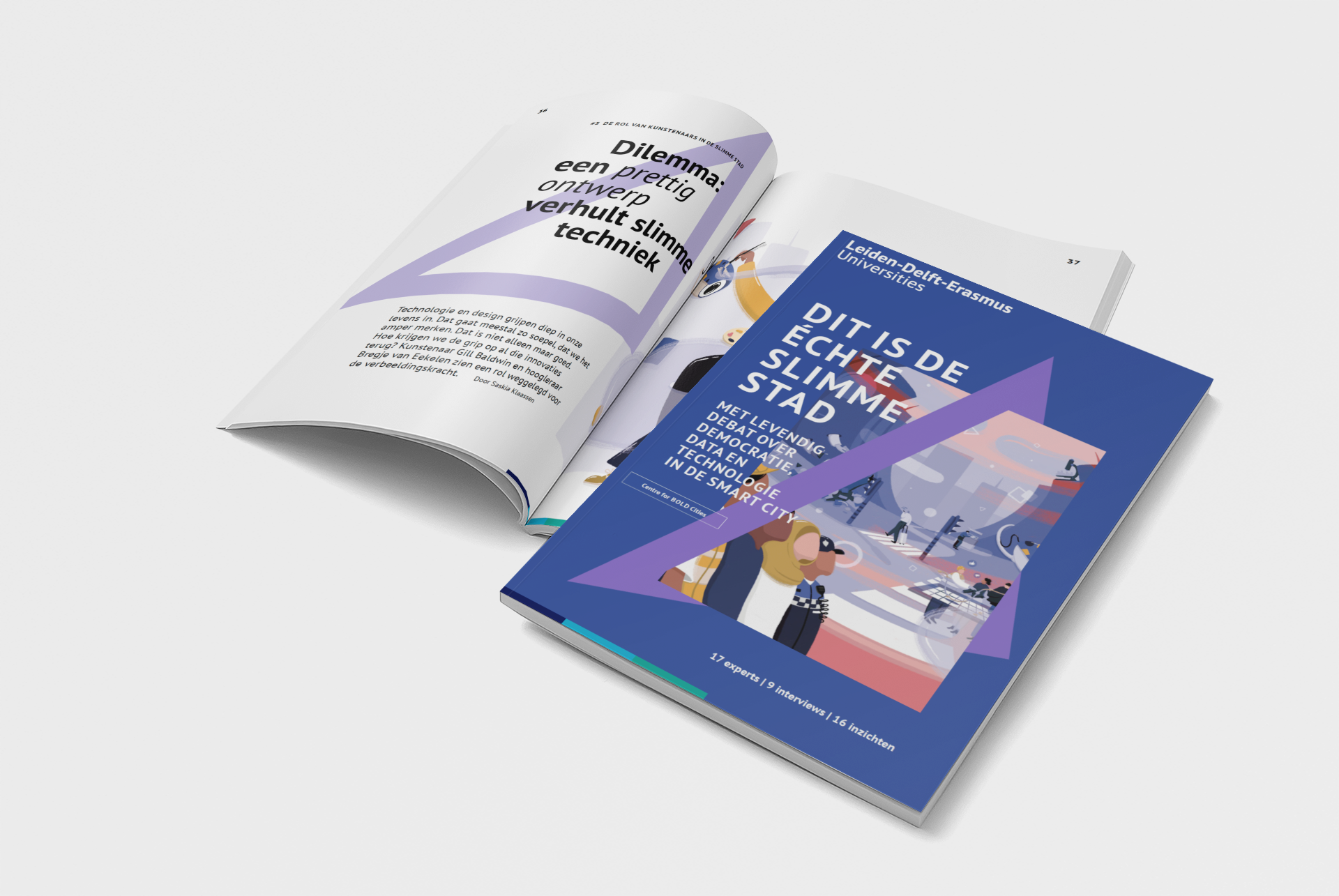Last June, we published our White Paper titled: 'This is the real smart city', (Dit is de echte slimme stad) in which scientists and practical experts discuss smart cities, citizen participation and governance related themes in duo interviews. In the coming months, these interviews will be published separately, on both the Leiden-Delft-Erasmus website (in English and Dutch) and on our own website (in English only).
This month, government manager Jan Harm Brouwer and astronomer Frans Snik engage in a discussion about the importance of citizen participation for science (citizen science).
Research by residents still does too little for residents
Citizens are increasingly conducting their own measurements. The government and knowledge institutions no longer have a monopoly on scientific data and sometimes find this difficult to deal with. But government manager Jan Harm Brouwer and astronomer Frans Snik became aware of their blind spots. By Saskia Klaassen

That is why it is good when citizens do their own research
To measure the impact of particulate matter on health and the climate, scientists actually need to measure at many more locations and times. Leiden University unexpectedly got that opportunity during the development of a NASA climate satellite, says astronomer Frans Snik. He launched a prominent citizen science project in 2013: iSPEX. 'We discovered that we could use the concept of the satellite instrument SPEX to make a plastic attachment on a smartphone, too.' In 2013 and 2014, ten thousand of those attachments provided as many additional measurement points for fine-particle emissions. Snik: 'We showed that, together, we can collect much more information about air pollution, which is complementary to the data from professional measurement points and satellites.'
In recent years, Jan Harm Brouwer of the Province of South Holland also handed out a large number of sensor boxes to citizens, to measure air quality and noise. 'We noticed that citizens doubted the province's data. I could keep explaining that we register fine-particle emissions very carefully, but that didn't convince them. We decided to let residents measure themselves.'
‘We noticed that citizens were doubting the data produced by the province.’
Regarding a healthy living environment, citizens and the government have different starting points, Brouwer believes. 'When it comes to complaints, the government looks at noise standards, but these don’t tell the whole story. People aren’t bothered by average noise levels, but by peak noise. That makes a big difference, even though we've hardly mapped this subjective experience. If we do, it might in time lead to stricter regulations.'
This is what citizen scientists are up against
The iSPEX project was meant to be a technical and social experiment, Snik looks back. ‘We wanted to know whether it would succeed in getting many people on board and would produce useful data. The change in mentality of authorities and scientific institutions is the main merit of iSPEX. Partly because of this, citizen science has become an accepted model for knowledge gathering and discussion.'
Thus, the trial was not primarily launched to reduce fine-particle emissions. That this logical next step was not taken is partly because of the project-based setup, Snik thinks. 'If the subsidy stops, action's no longer taken.' As far as he is concerned, funding should be more flexible, and the organisation of citizen science should be less top-down. 'Instead of a little project here and there, there should be much more room to experiment.'

Although the impact of measurements by citizens may still often be modest, they do give participants a sense of control, in Brouwer's experience. Citizens are better informed and involved if they know, for instance, exactly what the sources of pollution are. But subsequently making a point to authorities and companies is still 'very difficult', he acknowledges. Let alone that citizens can use the measurements to enforce measures.
Too often, companies and authorities discard the results because the measurements are supposedly not precise enough. Or they do not feel concerned because they comply with regulations. Even when a citizen measurement group finds support from the municipality, as in the case of fine-particle emissions near the A12 in Voorburg-Leidschendam, an impact is not guaranteed. Taking additional measures is expensive. A government body may thus decide to not take any further action, if they conform to European standards. This was also the decision of Rijkswaterstaat. 'Even though health damage can actually occur below these legal limits,' says Brouwer.
Too often, authorities put aside the results because the measurements are supposedly not accurate enough.
Although governments are becoming more aware of health effects within legal limit values, it is difficult to adapt the living environment from one day to the next 'Looking for solutions in consultation with citizens, for example in the Clean Air Agreement or provincial Noise Action Plans, would then be a sensible approach,' thinks Brouwer.
This is wat (citizen) researchers and administrators should take into account
Citizen science is certainly not a quick and cheap solution, Snik stresses. 'A lot of energy goes into the dialogue with all the stakeholders and participants in the project.' Brouwer also sees communication as a key concern. The expectations of participants and the government regularly diverge, is his experience. While the province hopes for understanding and support for their way of tackling fine-particles, citizens have a different agenda. 'For example, people joined because they wanted to take legal action against their wood-burning neighbour. We had to disappoint them; that wasn’t the aim of the project, and you can't get that done with the measurement results either.'
The recruitment also deserves attention. 'Ten years ago we thought we had a hip project with smartphones with iSPEX,' Snik looks back. 'But it attracted mainly white, highly educated, often also retired men. Young people did participate, but that was only once or twice.' Brouwer observes that citizen researchers often have a limited idea of what they want to achieve with the measurements. And to whom they should submit the results to have an impact. A recently established knowledge platform for governments, environment and inhabitants (OLI) should help in this regard.
The goal: engaged communities with a powerful voice for citizens
According to the two experts, citizen science is still in its infancy. In the future, citizen researchers will also seize their opportunity to successfully monitor and influence policy. Citizen scientists are now also taking the initiative themselves. A good example, in Snik's view, is the Plastic Spotter, which started with an app that allowed residents of Leyden to register litter in the canals. 'That grew into a broad movement of people who now fish the trash out of the canals every Sunday with a kayak. That trash would otherwise form plastic soup in the sea. And it doesn't stop there. Now that they know where the plastic comes from, they're also appealing to businesses, and returnable cups have sprung up.'
‘Each Sunday, people now fish trash from the canals with a kayak.’
According to Brouwer, the rise of citizen science may lead to residents having a greater say in what governments will investigate in the future. 'The government finds this a bit scary, but I see a cautious turnaround in dealing with citizen scientists. Examples are initiatives in the Clean Air Agreement or the establishment of a citizen measurement network around Rotterdam Airport.'
A modest and vulnerable attitude also suits scientists, Snik believes. 'Involve citizens from the beginning in the formulation of research questions.' For scientific institutions, this is not always easy. 'It means they have to give up their monopoly on knowledge.'
Jan Harm Brouwer is team leader air & noise at the Province of South Holland. He has extensive experience with (citizen) measurement projects in the field of air and noise quality. Brouwer was closely involved in the setup of OLI, a knowledge platform for citizen science and citizen participation in South Holland.
Frans Snik is an astronomer at Leyden University and pioneered measurements of particulate matter in the Netherlands in 2013 and 2014. He founded the knowledge centre Citizen Science Lab in Leyden. His advice on organizing citizen science in the Netherlands led to the creation of the network Citizen Science Nederland.

De white paper 'Dit is de échte slimme stad.' is op 22 juni 2023 gepresenteerd tijdens de conferentie Op (weg) naar de echte slimme stad in Den Haag. De White Paper is hieronder te lezen of kan als Pdf worden gedownload. Liever als papierenuitgave lezen? Bestellen kan via deze link en dan sturen wij u een gratis exemplaar op.
